Are LinkedIn’s collaborative articles part of SEO strategies nowadays?
More to the point, should they be?
The search landscape has changed dramatically in recent years, blurring the lines between search engines and where searches occur.
Following the explosive adoption of AI in content marketing and the most recent Google HCU, core, and spam updates, we’re looking at a very different picture now in search versus 12 months ago.
User-generated and community-led content seems to be met with renewed favourability by the algorithm (theoretically, mirroring what people reward, too).
LinkedIn’s freshly launched “collaborative articles” seem to be a perfect sign of our times: content that combines authority (thanks to LinkedIn’s authority), AI-generated content, and user-generated content.
What could go wrong?
In this article, we’ll cover:
- What are “collaborative articles” on LinkedIn?
- Why am I discussing them in the context of SEO?
- The main issues with collaborative articles.
- How is Google treating them?
- How they can impact your organic performance.
What Are LinkedIn Collaborative Articles?
First launched in March 2023, LinkedIn says about collaborative articles:
“These articles begin as AI-powered conversation starters, developed with our editorial team, but they aren’t complete without insights from our members. A select group of experts have been invited to contribute their own ideas, examples and experiences within the articles.“
Essentially, each of these articles starts as a collection of AI-generated answers to FAQs/prompts around any given topic. Under each of these sections, community members can add their own perspectives, insights, and advice.
What’s in it for contributors? To earn, ultimately, a “Top Voice” badge on their profile.
The articles are indexable and are all placed under the same folder (https://www.linkedin.com/advice/).
They look like this:
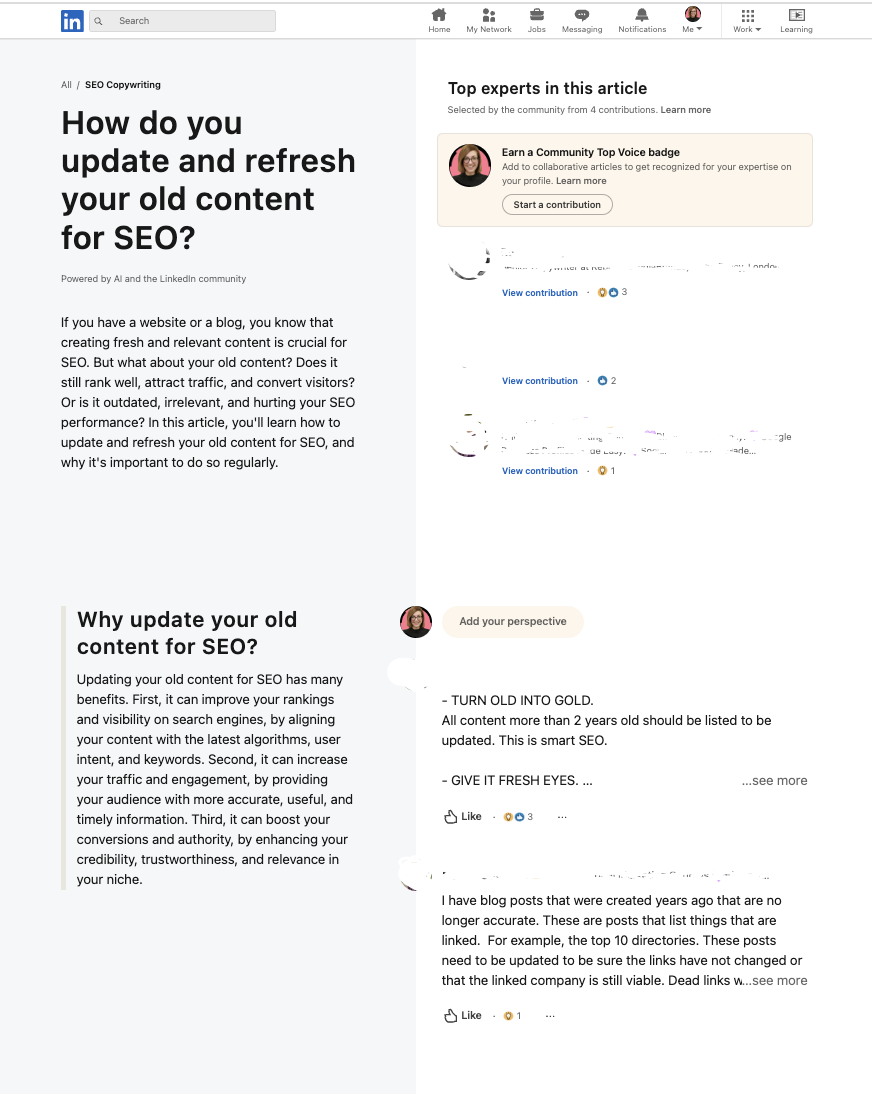 Screenshot from LinkedIn, November 2023
Screenshot from LinkedIn, November 2023On the left-hand side, there are always FAQs relevant to the topic answered by AI.
On the right-hand side is where the contributions by community members get posted. Users can react to each contribution in the same way as to any LinkedIn post on their feed.
How Easy Is It To Contribute And Earn A Badge For Your Insights?
Pretty easy.
I first got invited to contribute on September 19, 2023 – though I had already found a way to contribute a few weeks before this.
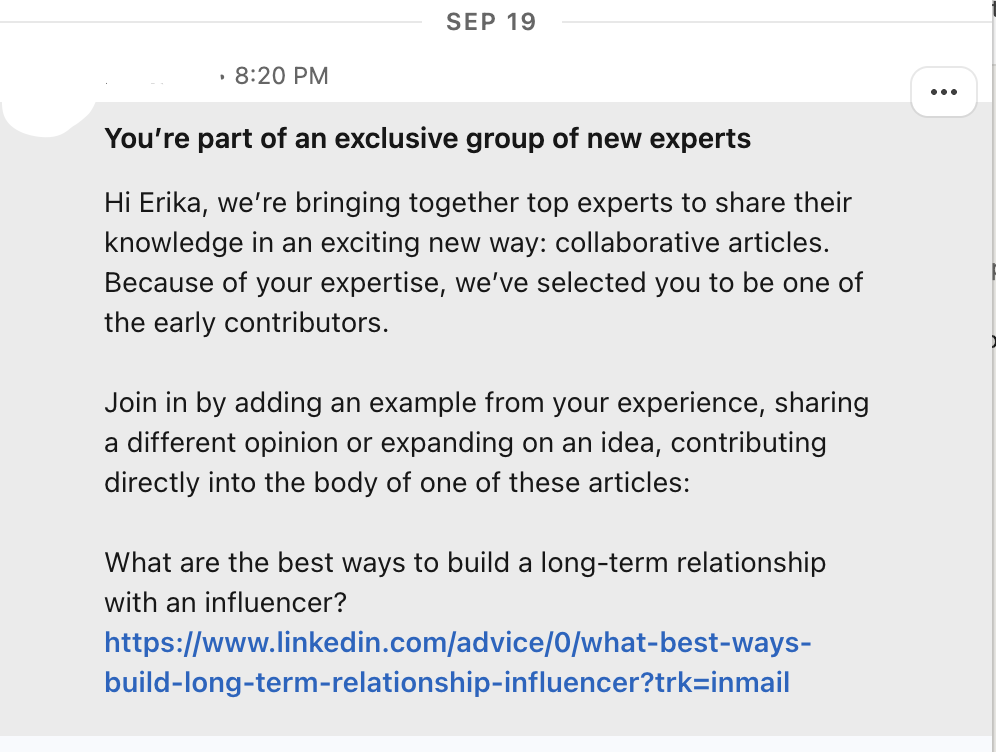 Screenshot from LinkedIn, November 2023
Screenshot from LinkedIn, November 2023My notifications included updates from connections who had contributed to an article.
By clicking on these, I was transferred to the article and was able to contribute to it, too (as well as additional articles, linked at the bottom).
I wanted to test how hard it was to earn a Top SEO Voice badge. Eight article contributions later (around three to four hours of my time), I had earned three.
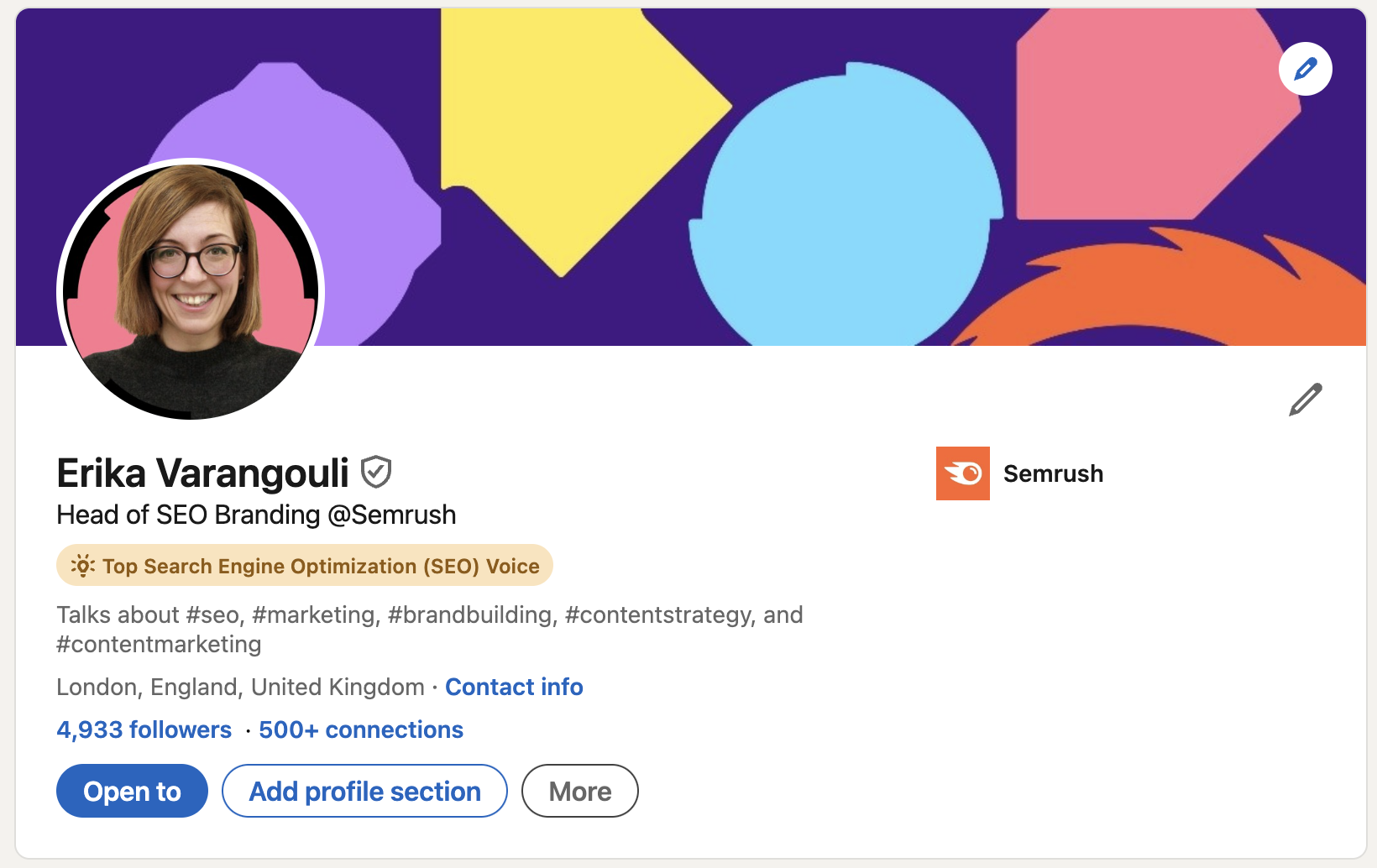
 Screenshots from LinkedIn, November 2023
Screenshots from LinkedIn, November 2023How? Apparently, simply by earning likes for my contributions.
A Mix Of Brilliance, Fuzzy Editorial Rules, And Weird Uncle Bob
Collaborative articles sound great in principle – a win-win for both sides.
- LinkedIn struck a bullseye: creating and scaling content (theoretically) oozing with E-E-A-T, with minimal investment.
- Users benefit from building their personal brand (and their company’s) for a fragment of the effort and cost this usually takes. The smartest ones complement their on-site content strategy with this off-site golden ticket.
What isn’t clear from LinkedIn’s Help Center is what this editorial mix of AI and human input looks like.
Things like:
- How much involvement do the editors have before the topic is put to the community?
- Are they only determining and refining the prompts?
- Are they editing the AI-generated responses?
- More importantly, what involvement (if any) do they have after they unleash the original AI-generated piece into the world?
- And more.
I think of this content like weird Uncle Bob, always joining the family gatherings with his usual, unoriginal conversation starters. Only, this time, he’s come bearing gifts.
Do you engage? Or do you proceed to consume as many canapés as possible, pretending you haven’t seen him yet?
Why Am I Talking About LinkedIn Articles And SEO?
When I first posted about LinkedIn’s articles, it was the end of September. Semrush showed clear evidence of their impact and potential in Search. (Disclosure: I work for Semrush.)
Only six months after their launch, LinkedIn articles were on a visible, consistent upward trend.
- They were already driving 792.5K organic visits a month. (This was a 75% jump in August.)
- They ranked for 811,700 keywords.
- Their pages were ranking in the top 10 for 78,000 of them.
- For 123,700 of them, they appeared in a SERP feature, such as People Also Ask and Featured Snippets.
- Almost 72% of the keywords had informational intent, followed by commercial keywords (22%).
Here’s a screenshot with some of the top keywords for which these pages ranked at the top:
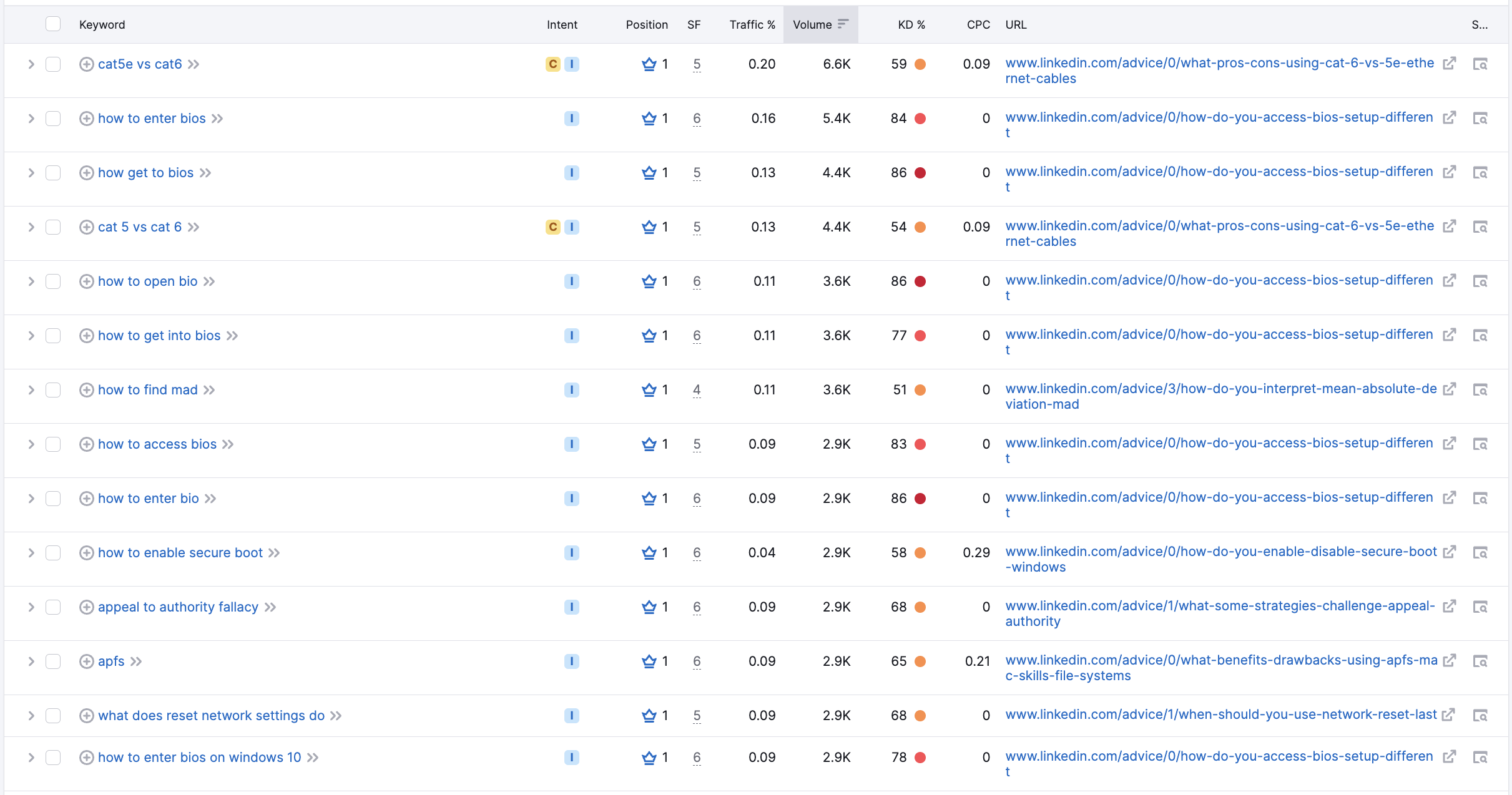 Screenshot from Semrush US database, desktop, September 2023
Screenshot from Semrush US database, desktop, September 2023Now, take the page that held the Featured Snippet for competitive queries like “how to enter bios” (monthly search volume of 5,400 and keyword difficulty of 84, based on Semrush data).
It came in ahead of pages on Tom’s Hardware, Hewlett-Packard, or Reddit.
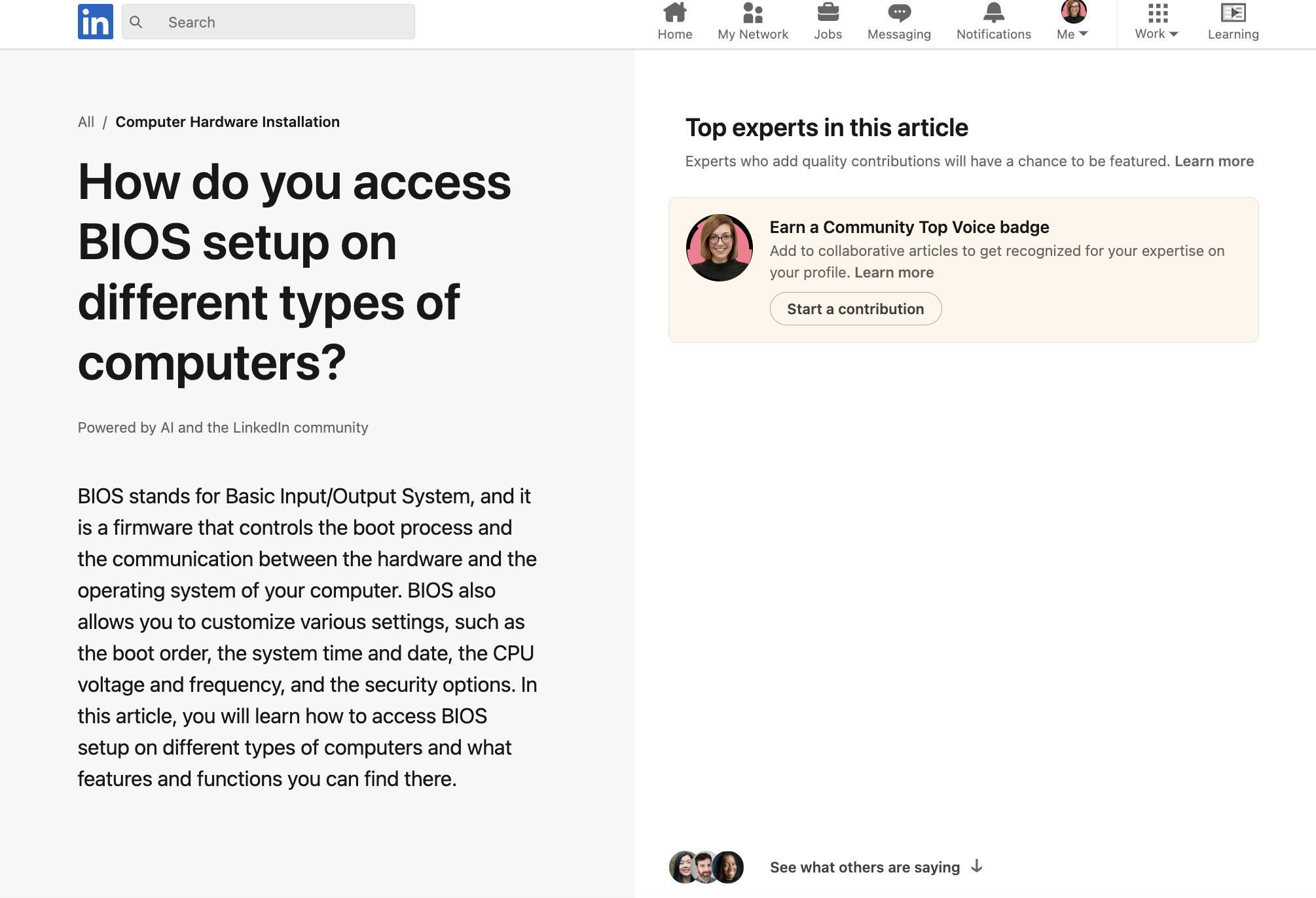
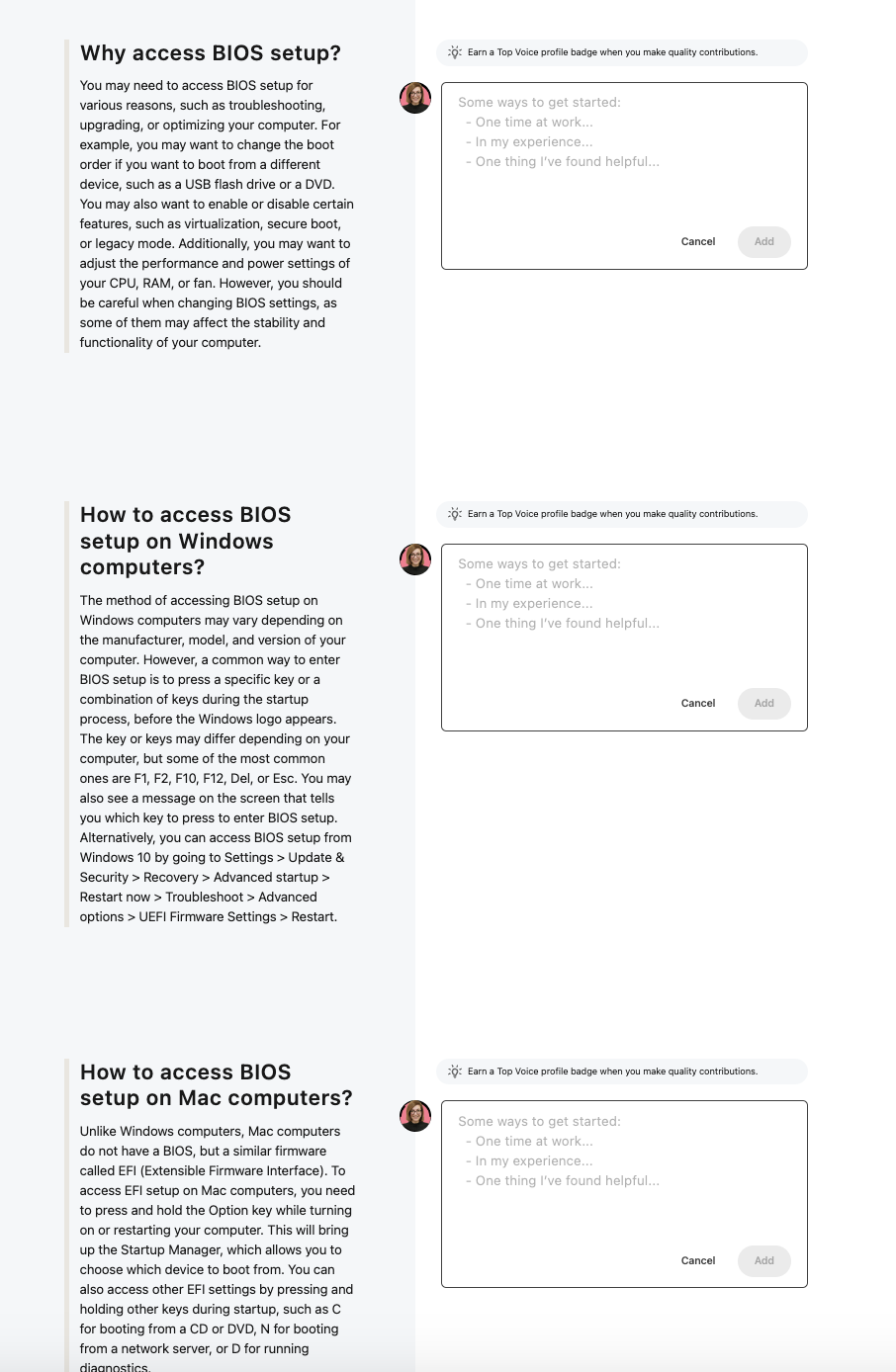 Screenshots from LinkedIn, November 2023
Screenshots from LinkedIn, November 2023See anything weird? Even at the time of writing this post, this collaborative article had precisely zero (0) contributions.
This means a page with 100% AI-generated content (and unclear interference of human editors) was rewarded with the Featured Snippet against highly authoritative and relevant domains and pages.
A Sea Of Opportunity Or A Storm Ready To Break Out?
Let’s consider these articles in the context of Google’s guidelines for creating helpful, reliable, people-first content and its Search Quality Rater Guidelines.
Of particular importance here, I believe, is the most recently added “E” in “E-E-A-T,” which takes experience into account, alongside expertise, authoritativeness, and trustworthiness.
For so many of these articles to have been ranking so well must mean that they were meeting the guidelines and proving helpful and reliable for content consumers.
After all, they rely on “a select group of experts to contribute their own ideas, examples and experiences within the articles,” so they must be worthy of strong organic performances, right?
Possibly. (I’ve yet to see such an example, but I want to believe somewhere in the thousands of pages these do exist).
But, based on what I’ve seen, there are too many examples of poor-quality content to justify such big rewards in the search engine results pages (SERPs).
The common issues I’ve spotted:
1. Misinformation
I can’t tell how much vetting or editing there is going on behind the scenes, but the amount of misinformation in some collaborative articles is alarming. This goes for AI-generated content and community contributions alike.
I don’t really envy the task of fact-checking what LinkedIn describes as “thousands of collaborative articles on 2,500+ skills.” Still, if it’s quality and helpfulness we’re concerned with here, I’d start brewing my coffee a little stronger if I were LinkedIn.
At the moment, it feels a little too much like a free-for-all.
Here are some examples of topics like SEO or content marketing.
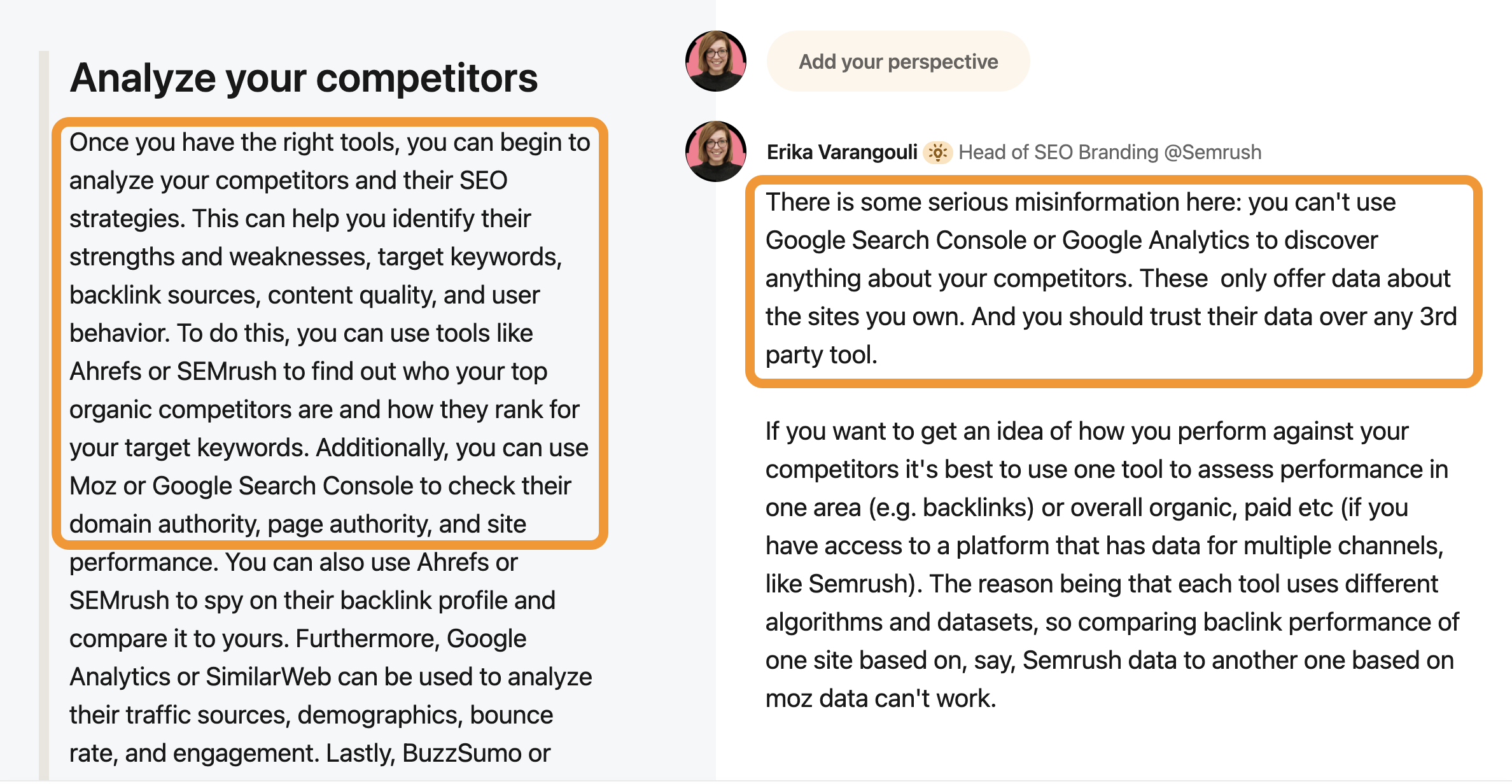
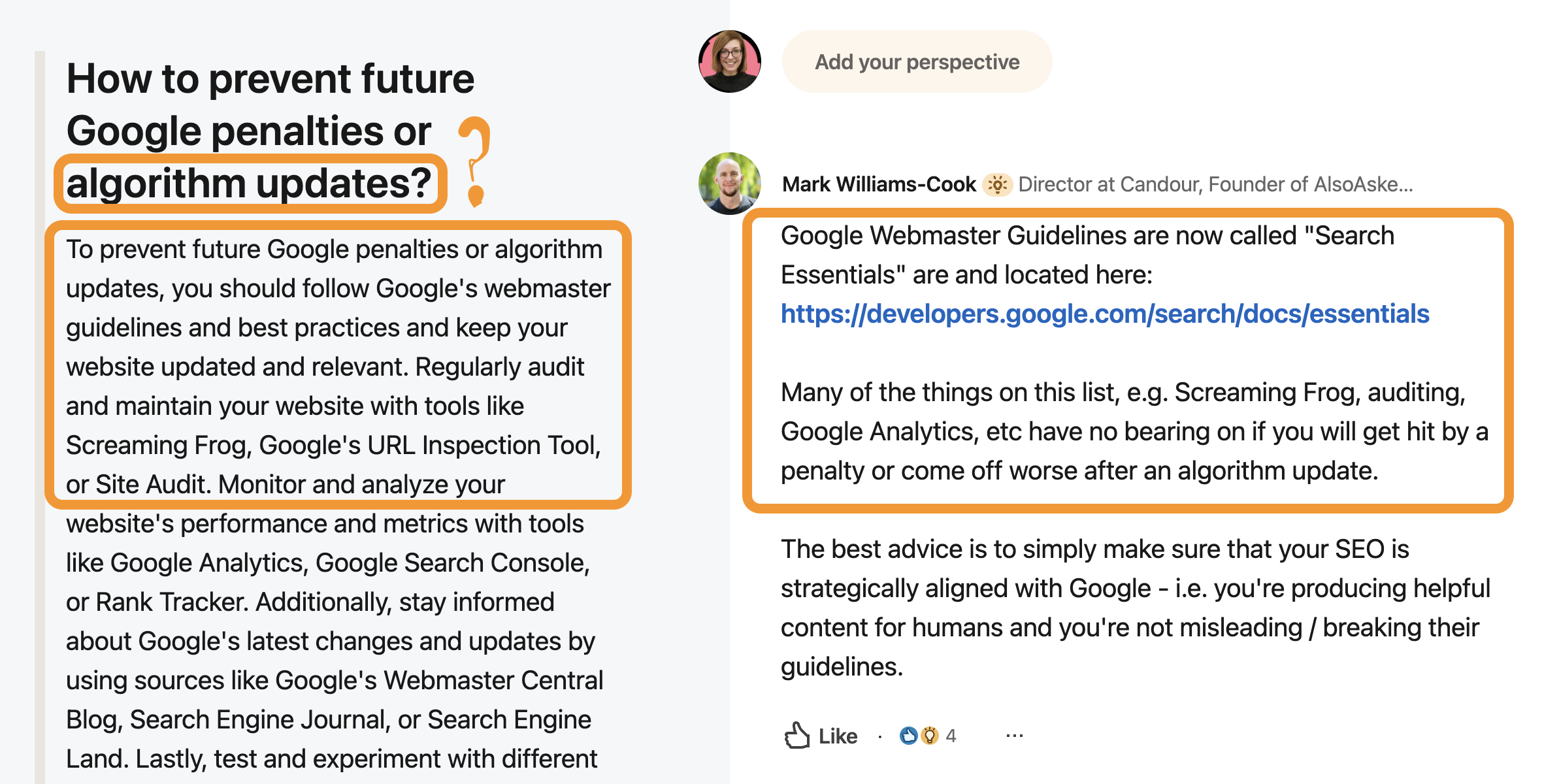
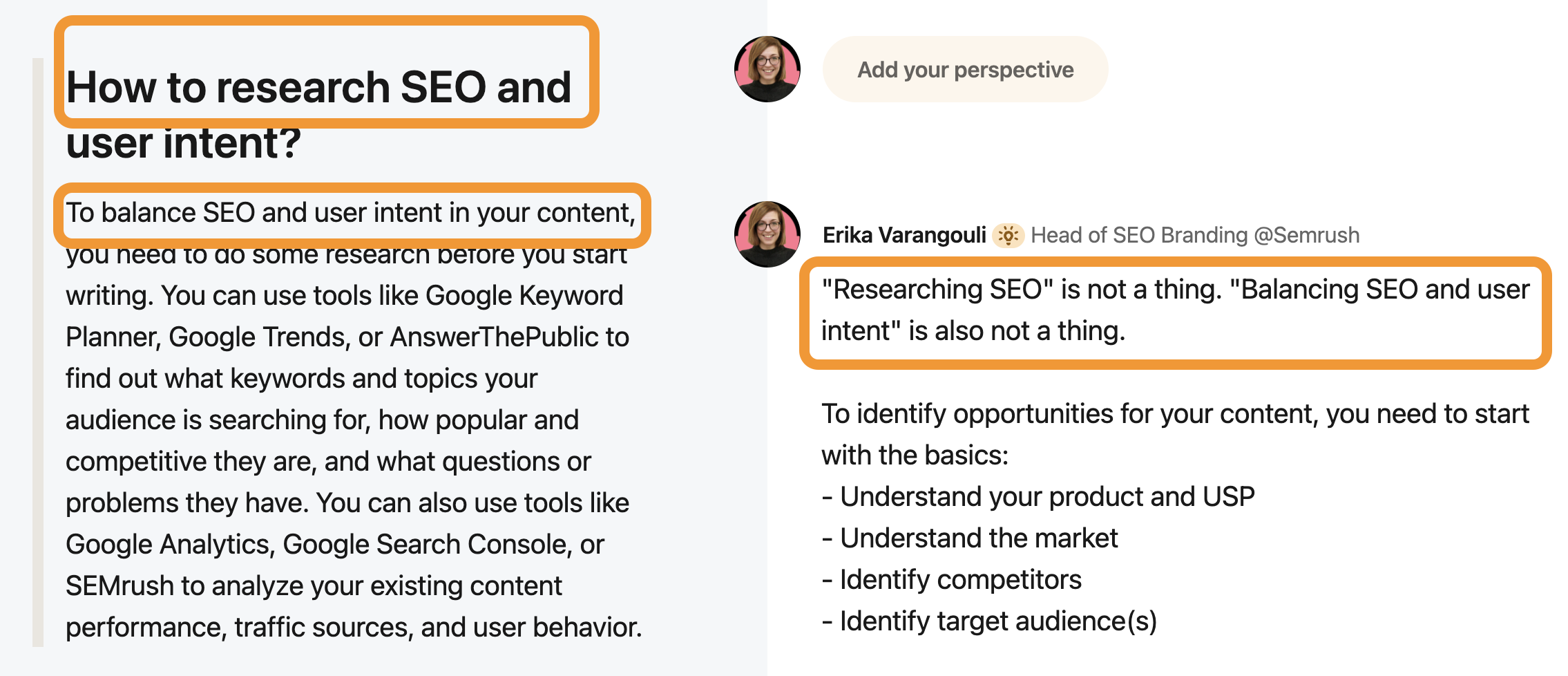 Screenshots from LinkedIn, November 2023
Screenshots from LinkedIn, November 20232. Thin Content
To a degree, some contributions seem to do nothing more than mirror the points made in the original AI-generated piece.
For example, are these contributions enough to warrant a high level of “experience” in these articles?
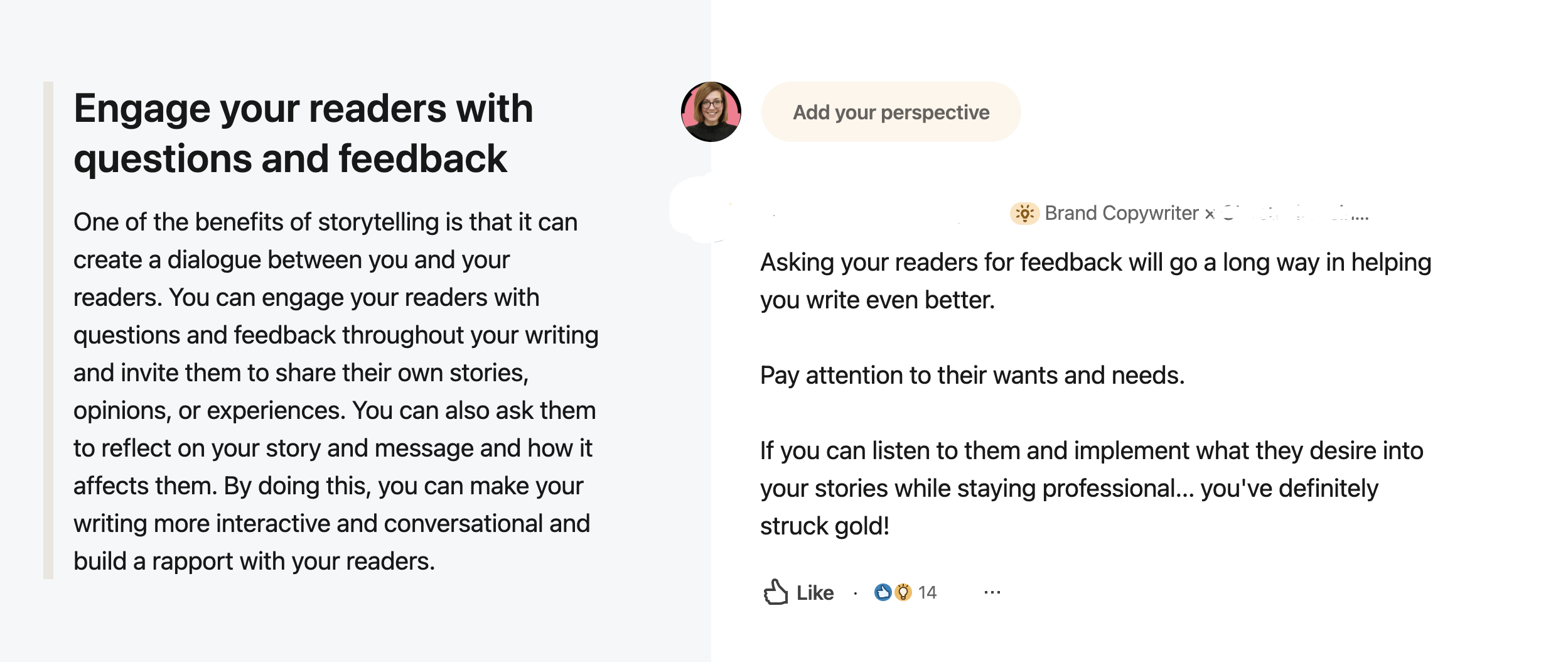
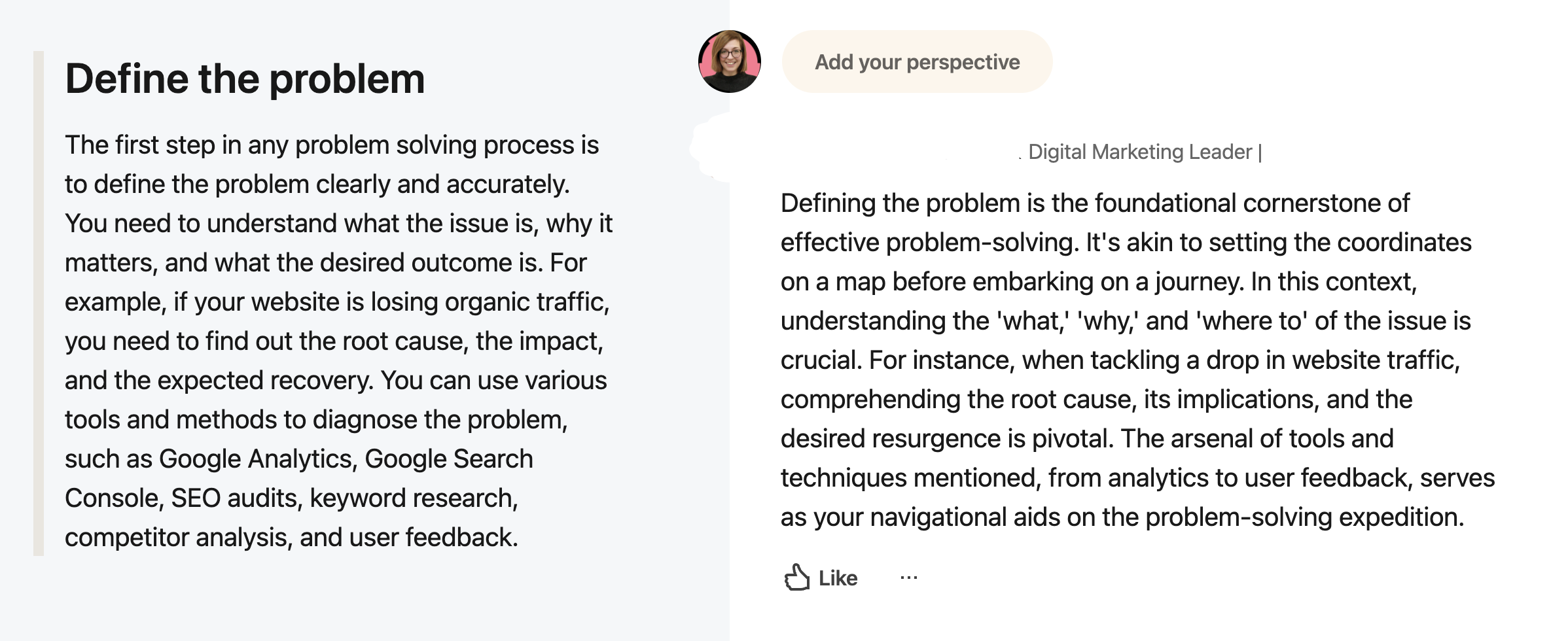 Screenshots from LinkedIn, November 2023
Screenshots from LinkedIn, November 2023The irony to think that some of these contributions may have also been generated by AI…
3. Missing Information
While many examples don’t provide new or unique perspectives, some articles simply don’t provide…any perspectives at all.
This piece about analytical reasoning ranked in the top 10 for 128 keywords when I first looked into it last September (down to 80 in October).
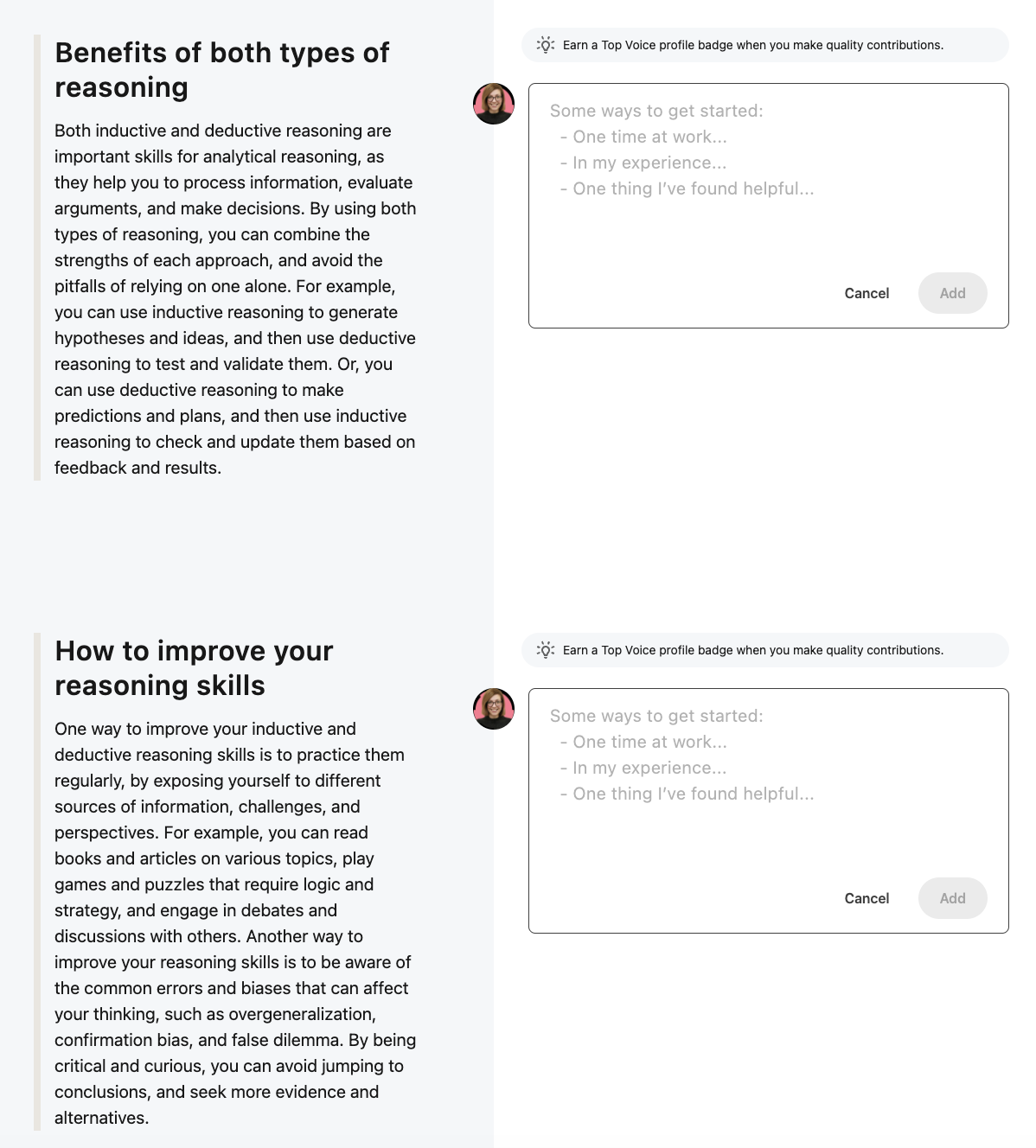 Screenshot from LinkedIn, November 2023
Screenshot from LinkedIn, November 2023It even held the Featured Snippet for competitive keywords like “inductive reasoning examples” for a while (5.4K monthly searches in the US), although it had no contributions on this subsection.
Most of its sections remain empty, so we’re talking about mainly AI-generated content.
Does this mean that Google really doesn’t care whether your content comes from humans or AI?
I’m not convinced.
How Have The Recent Google Updates Impacted This Content?
After August and October 2023 Google core updates (at the time of writing, the November 2023 Google core update is rolling out), the September 2023 helpful content update, and the October 2023 spam update, the performance of this section seems to be declining.
According to Semrush data:
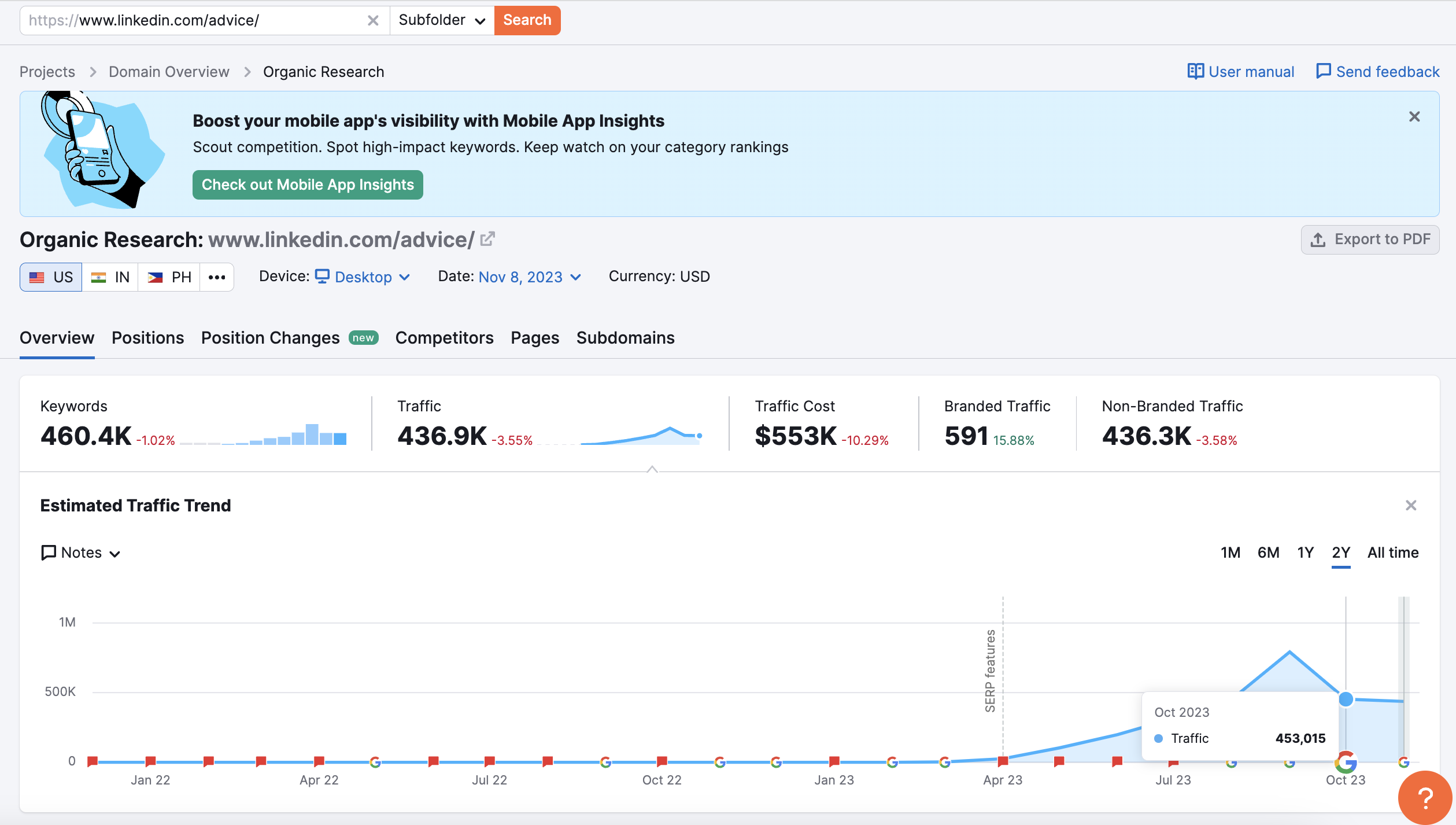 Screenshot from Semrush, November 2023
Screenshot from Semrush, November 2023- Organic traffic to these pages was down to 453,000 (a 43% drop from September, bringing their performance close to August levels).
- They ranked for 465,100 keywords (down by 43% MoM).
- Keywords in the Top 10 dropped by 33% (51,900 vs 78,000 in September).
- Keywords in the top 10 accounted for 161,800 visits (vs 287,200 in September, down by 44% MoM).
The LinkedIn domain doesn’t seem to have been impacted negatively overall.
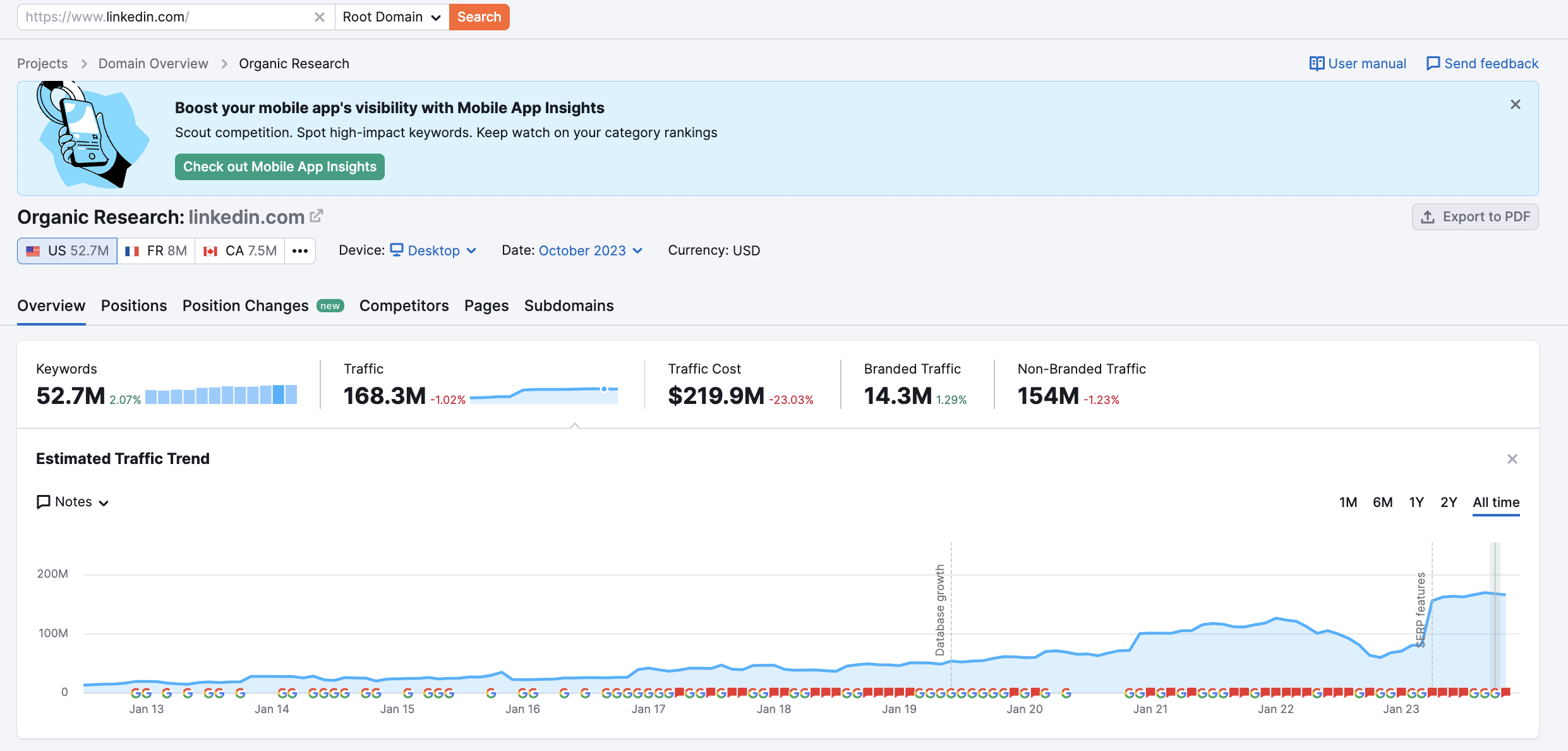 Screenshot from Semrush, November 2023
Screenshot from Semrush, November 2023Is this a sign that Google has already picked up the weaknesses in this content and has started balancing actual usefulness versus the overall domain authority that might have propelled it originally?
Will we see it declining further in the coming months? Or are there better things to come for this feature?
Should You Already Be On The Bandwagon If You’re In SEO?
I was on the side of caution before the Google algorithm updates of the past couple of months.
Now, I’d be even more hesitant to invest a substantial part of my resources towards baking this content into my strategy.
As with any other new, third-party feature (or platform – does anyone remember Threads?), it’s always a case of balancing being an early adopter with avoiding over-investment. At least while being unclear on the benefits.
Collaborative articles are a relatively fresh, experimental, external feature you have minimal control over as part of your SEO strategy.
Now, we also have signs from Google that this content may not be as “cool” as we initially thought.
This Is What I’d Do
That’s not to say it’s not worth trying some small-scale experiments.
Or, maybe, use it as part of promoting your own personal brand (but I’ve yet to see any data around the impact of the “Top Voice” badges on perceived value).
Treat this content as you would any other owned content.
- Follow Google’s guidelines.
- Add genuine value for your audience.
- Add your own unique perspective.
- Highlight gaps and misinformation.
Experience shows us that when tactics get abused, and the user experience suffers, Google eventually steps in (from guest blogging to parasite SEO, most recently).
It might make algorithmic tweaks when launching updates, launch a new system, or hand out manual actions – the point is that you don’t know how things will progress. Only LinkedIn and Google have control over that.
As things stand, I can easily see any of the below potential outcomes:
- This content becomes the AI equivalent of the content farms of the pre-Panda age, leading to Google clamping down on its search performance.
- LinkedIn’s editors stepping in more for quality control (provided LinkedIn deems the investment worthwhile).
- LinkedIn starts pushing its initiative much more to encourage participation and engagement. (This could be what makes the difference between a dead content farm and Reddit-like value.)
Anything could happen. I believe the next few months will give us a clearer picture.
What’s Next For AI And Its Role In SEO And Social Media?
When it comes to content creation, I think it’s safe to say that AI isn’t quite ready to E-E-A-T your experience for breakfast. Yet.
We can probably expect more of these kinds of movements from social media platforms and forums in the coming months, moving more toward mixing AI with human experience.
What do you think is next for LinkedIn’s collaborative articles? Let me know on LinkedIn!
More resources:
- Content Creation In An AI World
- Exploring The Marketing Potential Of Predictive AI
- How To Use LinkedIn For Marketing
Featured Image: BestForBest/Shutterstock





